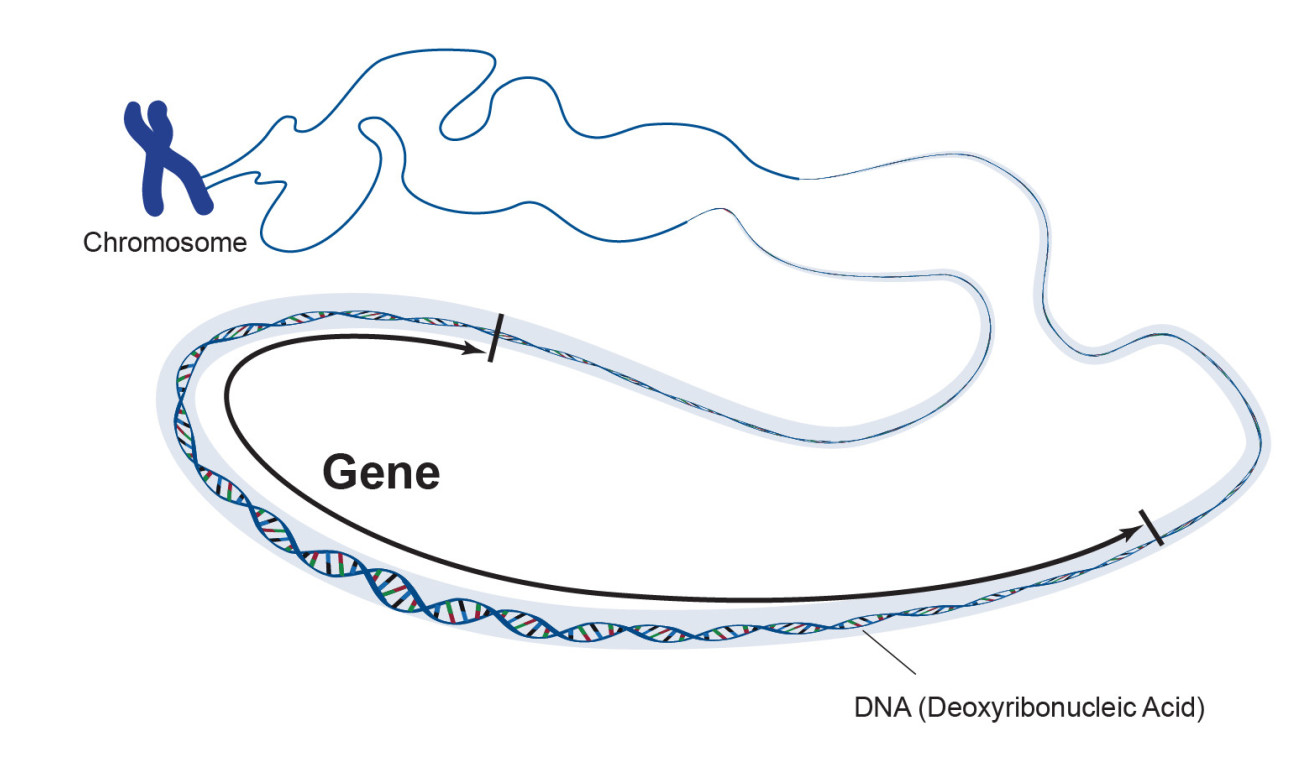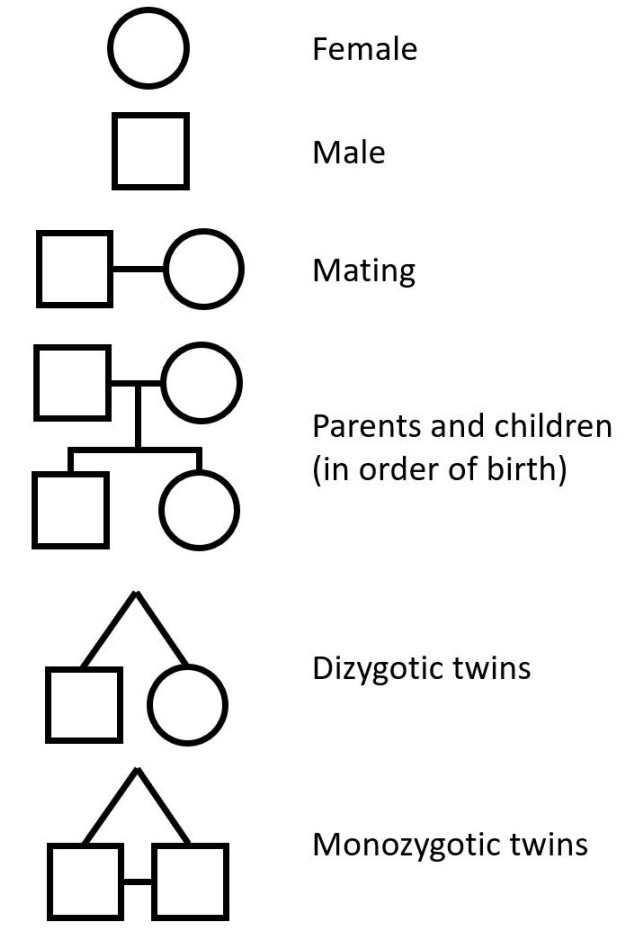Tracking the heredity of eye colour in your family
Equipment needed:
- paper & pen/pencil
Background
The observable traits that our bodies have are – to an extent – controlled by our genes. An example of such a trait is the colour of our eyes. The colour of your eye is your phenotype or in other words that is the expression of the genes for eye colour that you have.
Genes are arranged on chromosomes:

Courtesy of the National Human Genome Research Institute
We all inherit one copy of the gene from our mother and one from our father. This ‘copy’ is referred to as allele. Often, more than one allele exists for a given gene and in such case one allele will be dominant over other alleles. Here we are going to look at the inheritance of eye colour as an example of this.
Scientists have already identified over 100 different genes that influence hair, skin and eye pigmentation but here we are going to keep it simple and only work with BROWN and BLUE eye colour.
In general, the allele for brown eyes is DOMINANT over the allele for blue eyes (which is then called the RECESSIVE allele).
What does it mean?
- If you have both alleles for brown eyes, you will have brown yes
- If you have both alleles for blue colour, you will have blue eyes
- If you have one allele for brown eyes and one allele for blue eyes you will have brown eyes

In other words, if you have allele (from either of your parent) for brown eyes, you are likely to have brown eyes no matter what other allele you inherit from your other parent.
Now, let’s see if we can spot this dominant inheritance in your family!
You are going to construct a pedigree (a family tree) to show this.
Constructing a pedigree allows you to see the inheritance pattern of any trait you want to follow up and that is genetically determined (such as specific diseases, dimples, eye colour etc)
Symbols used to construct a pedigree:

- When creating a family tree/pedigree start with yourself & your siblings
- Choose the correct symbol to denote your gender. These symbols are the ones that are widely used but you can create your own symbols if you want! (You will always have to state what each symbol means)
- Link yourself and your siblings to your parents
- Note down your parents’ siblings and their children (your cousins)
- Similarly, then link your parents’ siblings to their parents (your grandparents) and so on – as far back as you can!
- When you have noted down members of your family, colour in the symbols using either blue or brown colour to denote the eye colour of the individual family members.
- Can you see from your tree that the allele for brown eyes is dominant over the allele for blue eye colour?
Extra
We said that if you have an allele for brown eyes, you are likely to have brown eyes no matter what other alleles you have inherited BUT you still have the other allele for the eye colour and you can pass this allele to your children.
This means that even if you and your partner will have brown eyes, your children can have, indeed, blue eyes. How? Well both you and your partner have brown eyes but both have clearly another allele – for blue eyes. And as genetics wanted it, you happened to pass to your children only the allele for the blue colour!
Can you guess from the family tree of eye colours which individual has which alleles for the eye colour?
Do you want to introduce green colour into the picture? Find out more.
Do you want to track other genetically determined traits within your family tree? Try:
- Colour-blindness
- Cleft chin
- Left-handedness
Can you tell which is caused by a dominant and which one by the recessive allele?
Outreach Newsletter
Sign up to our newsletter and mailing list for updates about Outreach events and activities.